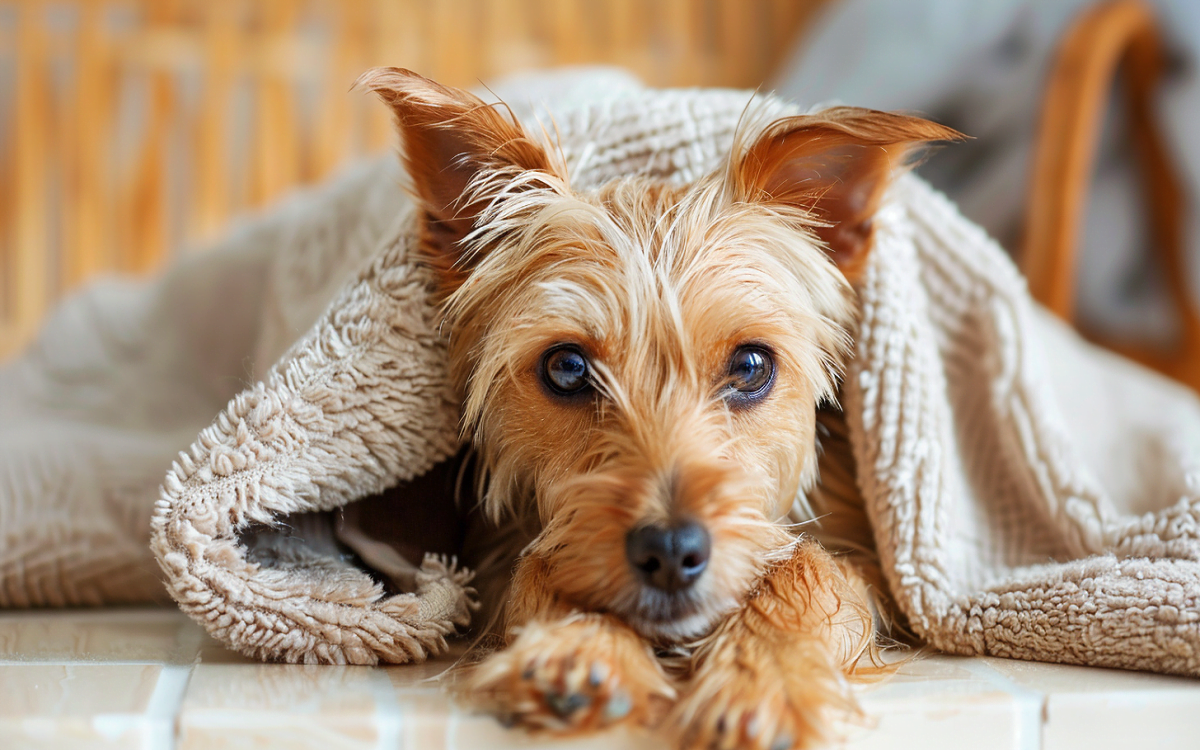Did you know that a single female flea can lay up to 50 eggs per day? This alarming fact underscores why tackling a flea infestation quickly is vital to your dog’s comfort and preventing those pesky pests from taking over your home.
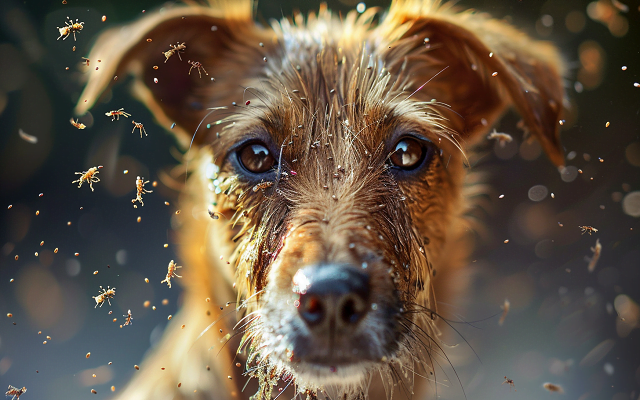
What are Flea Shampoos and How Do They Work?
Flea shampoos are specially formulated topical solutions designed to kill fleas and their eggs on contact. Unlike spot-on treatments, flea shampoos work immediately. Here’s how different types of flea shampoos get the job done:
- Chemical Insecticides: Chemical insecticides like pyrethrins or permethrins attack a flea’s nervous system, causing paralysis and death. Learn more about the different types of insecticides used in pet products from the National Pesticide Information Center.
- Insect Growth Regulators (IGRs): IGRs, like methoprene or pyriproxyfen, disrupt the flea’s life cycle, preventing eggs from hatching and larvae from maturing. They offer more extended protection but don’t kill adult fleas immediately.
- Natural Oils: Essential oils like peppermint, cedarwood, and lemongrass can repel fleas and offer some insecticidal properties. Important: Always choose natural flea shampoos explicitly formulated for dogs and use them with caution, as some oils can be harmful if not used correctly.
Signs Your Dog Has Fleas
Itching is the first sign of fleas, but don’t stop there. Look for these clues:
- Visible fleas: Tiny, reddish-brown insects that jump quickly when you part your dog’s fur.
- Flea “dirt”: Black specks of flea droppings in your dog’s fur or bedding.
- Hot spots: Inflamed, irritated areas from excessive scratching and biting.
- Hair loss: Especially around the base of the tail or hind legs.
Benefits of Using Flea Shampoos
Flea shampoos are a valuable tool in your fight against fleas:
- Fast Relief: Shampoos can kill adult fleas on contact, providing instant relief from the relentless itching and discomfort.
- Multiple Life Stages: Some flea shampoos contain ingredients that target fleas at different stages (eggs, larvae, adults), helping disrupt the life cycle.
- Soothing Ingredients: Look for shampoos with oatmeal or aloe vera to calm irritated skin, especially for dogs with sensitive skin.
Factors to Consider When Choosing a Flea Shampoo
Selecting the best flea shampoo for your furry friend goes beyond just grabbing a bottle off the shelf. Here’s a breakdown of the essential factors to consider:
Active Ingredients
- Pyrethrins/Permethrins: These fast-acting insecticides offer immediate relief but may have shorter residual effects. Be aware of potential side effects, particularly for sensitive dogs.
- Insect Growth Regulators (IGRs): Best for breaking the flea life cycle and preventing future infestations, but they may not kill adult fleas on contact.
- Natural Ingredients: While gentler, their effectiveness varies. Always use with caution, and choose products labeled safe for dogs. Some fleas also develop resistance to certain natural ingredients.
Dog’s Age and Health
|
Age Group |
Flea Shampoo Recommendations |
Health Considerations |
|
|
Puppies |
Puppy-specific formulas with gentle ingredients |
Consult a vet for skin sensitivities |
|
|
Adults |
Most brands are suitable, and variety is based on active ingredients |
Consider skin sensitivity or existing conditions |
|
|
Seniors |
For mild formulas, consider moisturizing ingredients |
|
Table: Age Recommendations and Common Health Considerations
Severity of Infestation
- Mild Infestation: A conventional over-the-counter flea shampoo may be sufficient.
- Heavy Infestation: Your veterinarian might recommend a prescription-strength flea shampoo for faster results. Discussing additional treatment options is also advisable.
Ease of Use
- Application Time: Some shampoos require leaving them on for several minutes before rinsing. Consider your dog’s temperament and your schedule.
- Rinsing: Easy-to-rinse formulas save time and water.
- Re-application: Check how frequently the shampoo needs to be reapplied for optimal effect.
Popular Flea Shampoo Brands and Products
Here’s a quick look at some popular flea shampoo brands to get you started. Note: Always research specific products and consult your veterinarian before making a final decision.
Conventional Brands
- Adams Flea & Tick Shampoo
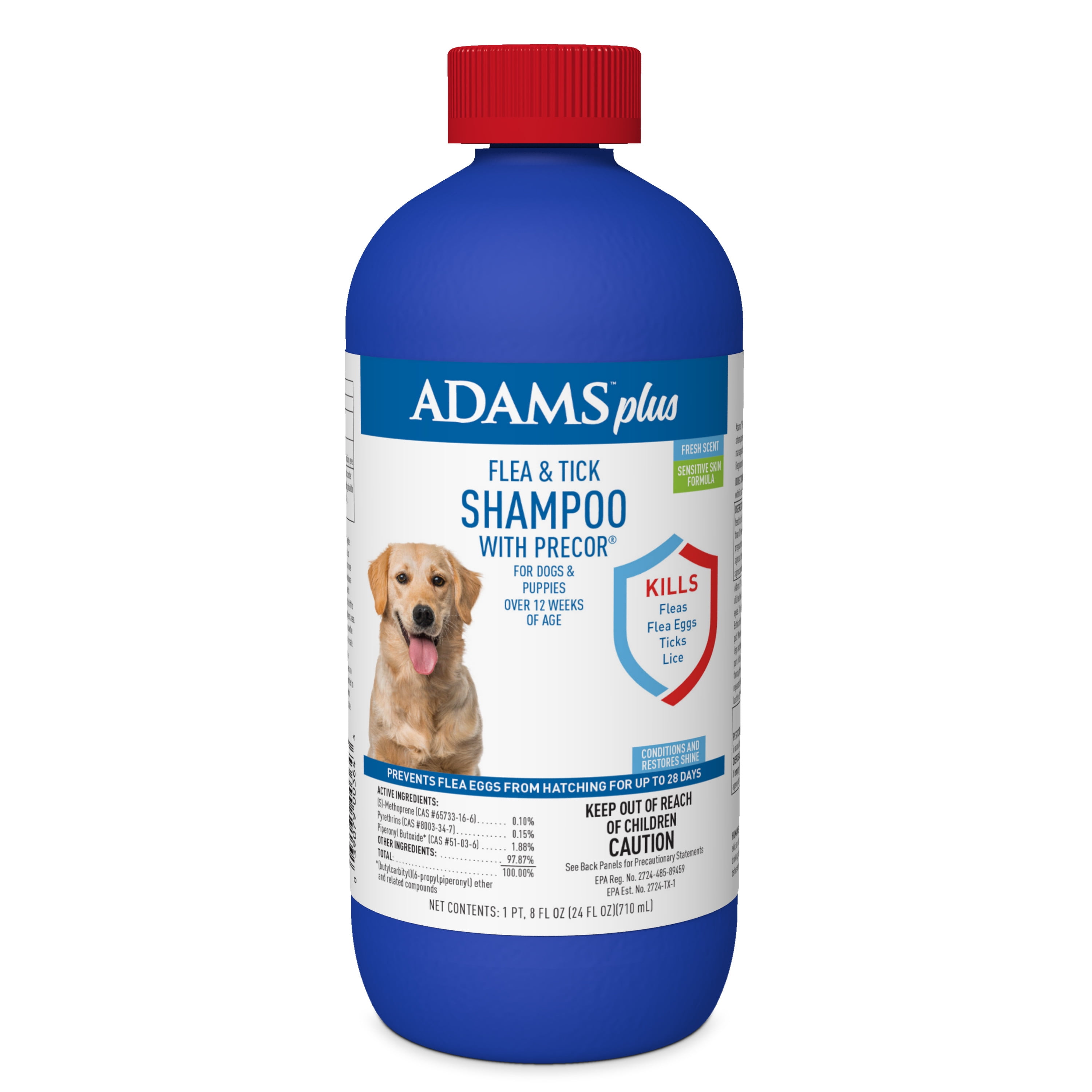
- Hartz UltraGuard Rid Flea & Tick Shampoo
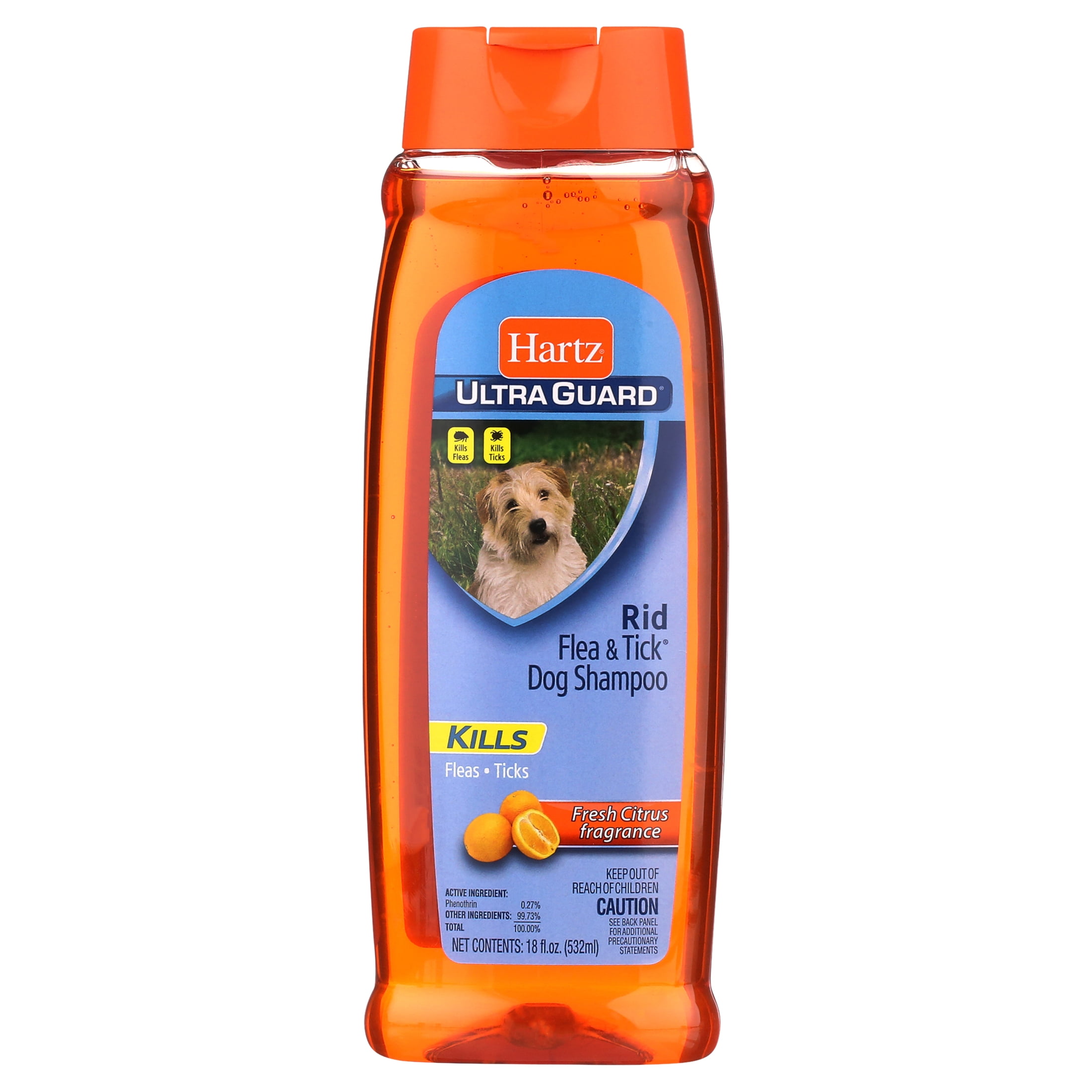
- Sentry Flea & Tick Shampoo

Natural Options
- TropiClean Natural Flea & Tick Shampoo
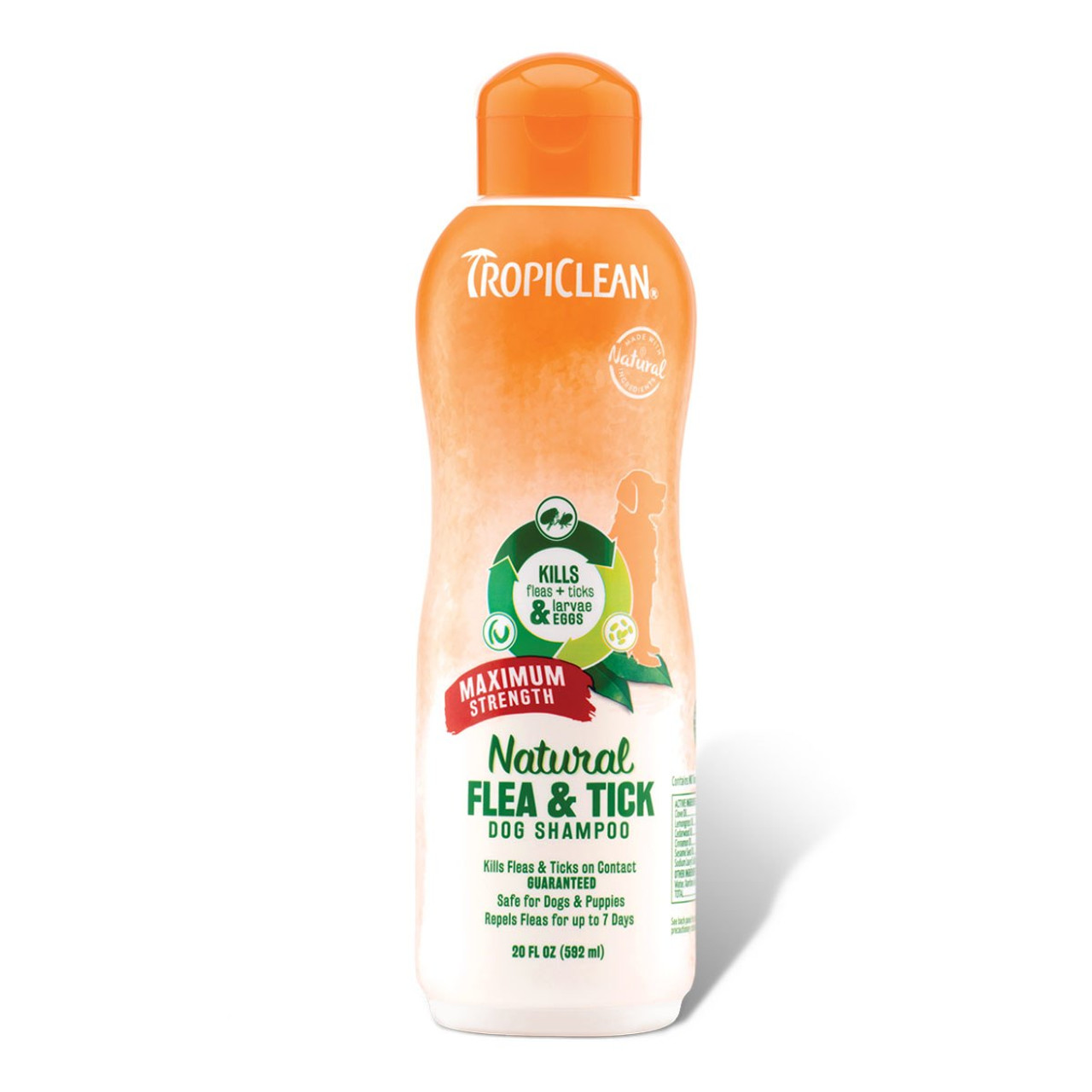
- Wondercide Natural Flea & Tick Shampoo

- Vet’s Best Flea & Tick Shampoo

Drugstore vs. Vet-Recommended
- Drugstore: May be more affordable, accessible, and contain various ingredients.
- Vet-Recommended: Often target specific needs (puppies, heavy infestations), may have stronger active ingredients, and come with professional guidance.
Safety Precautions Before Using Flea Shampoos
Protecting your four-legged friend is the top priority. Remember these essential safety tips:
- Always Consult Your Veterinarian: This is crucial for puppies, pregnant or nursing dogs, and dogs with any underlying health conditions.
- Read the Label Thoroughly: Follow the manufacturer’s instructions precisely, including age recommendations, dilution ratios, and application times.
- Wear Gloves: Protect your skin when handling flea shampoo, as some ingredients can be irritating.
Step-by-Step Guide to Using Flea Shampoos
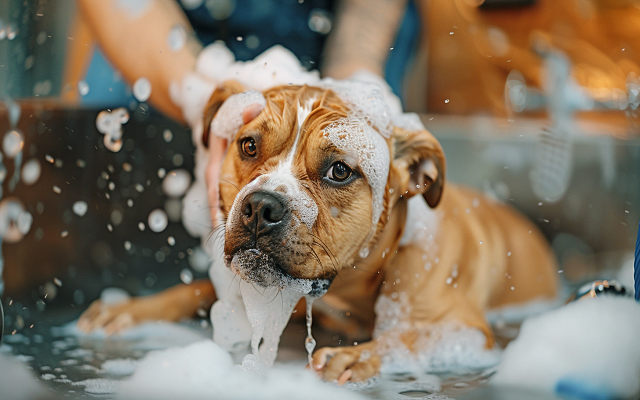
Now have a look at my guide for using Flea Shampoos
- Prepare the Bath: Gather your supplies: flea shampoo, towels, gloves, a non-slip mat (optional), and treats. Fill a tub or sink with lukewarm water.
- Brush Your Dog: Remove any mats or tangles before bathing to help the shampoo work evenly.
- Protect Eyes and Ears: Apply a small amount of petroleum jelly around your dog’s eyes and place cotton balls in their ears to prevent water and shampoo from getting in.
- Wet Your Dog Thoroughly: Use lukewarm water and avoid getting water in their eyes, ears, or nose.
- Apply Shampoo: Follow the product’s instructions for dilution and application. Work the shampoo into a lather, covering all areas of your dog’s fur, including between toes and under the tail.
- Wait Time: Leave the shampoo on for the recommended time (often 5–10 minutes) to ensure it effectively kills fleas.
- Rinse Thoroughly: Use lukewarm water and rinse until the water runs clear, ensuring all shampoo residue is removed.
- Dry and Comb: Towel-dry your dog and use a flea comb to remove any remaining fleas or flea dirt.
Beyond the Basics: Optimizing Flea Shampoos Treatment
To optimize the flea shampoos treatment, keep these things in mind:
- Treat Your Dog’s Environment: To break the flea life cycle, wash your dog’s bedding in hot water, and vacuum carpets, furniture, and any areas your dog frequents.
- Consider Additional Protections: Ask your veterinarian about combining flea shampoo with other preventative treatments like spot-on medications or flea collars for long-lasting protection.
DIY Flea Shampoos: Myths and Risks
The internet is filled with recipes for homemade flea shampoos using ingredients like vinegar, dish soap, and various essential oils. While the idea of a natural solution is appealing, it’s crucial to approach DIY treatments with extreme caution. Here’s why:
- Unpredictable Effectiveness: Homemade concoctions lack the rigorous testing of commercial flea shampoos. Their efficacy against fleas may be inconsistent at best, or non-existent at worst.
- Potential Skin Irritation: Some ingredients, like dish soap and vinegar, can be harsh and strip your dog’s skin of its natural oils. This can lead to dryness, irritation, and even increase the risk of secondary skin infections.
- Risk of Toxicity: Certain essential oils can be toxic to dogs if used incorrectly or in the wrong concentration.
- Missed Diagnosis: If your dog’s itching and discomfort aren’t caused by fleas, a DIY shampoo won’t help and could delay proper diagnosis and treatment of underlying skin conditions.
- Bottom Line: Always consult your veterinarian before trying any DIY flea shampoos on your dog. They can help you determine if a homemade solution is even appropriate and guide you towards safer alternatives if needed.
So if you want to make DIY Flea Shampoos for your dogs, check our article: DIY Flea Shampoo Recipes: Safe & Effective for Your Dog
Conclusion
Choosing the right flea shampoos is the first step in winning the battle against fleas. Remember to consider your dog’s age, health, and the severity of the infestation, and always consult your veterinarian for personalized guidance. Used safely and strategically, flea shampoo is an essential tool in your flea-fighting arsenal.

While flea shampoo is important for treating an existing problem, the easiest way to avoid dealing with fleas altogether is prevention. Year-round use of flea and tick preventatives, as recommended by your veterinarian, breaks the flea life cycle and keeps your dog protected from those annoying parasites.
Don’t hesitate to consult your veterinarian if you’re facing a stubborn flea infestation, your dog isn’t responding to over-the-counter treatments, or if they have skin sensitivities or allergies. Your veterinarian can tailor a treatment plan specifically for your dog’s needs and ensure they get the relief they deserve.
Frequently Asked Questions About Flea Shampoos
How often can I use flea shampoo on my dog?
Always follow the instructions on the specific shampoo you’re using. Some are safe for weekly use, while others may recommend longer intervals. Overbathing can lead to dry skin, so consult your veterinarian if you need to bathe your dog frequently for a severe infestation.
Can I use human shampoo on my dog to kill fleas?
No, human shampoo is formulated for the pH of human skin and hair, not dogs. Using human shampoo can disrupt your dog’s natural skin balance and make them vulnerable to dryness, irritation, and even infections.
Are there flea shampoos for dogs with sensitive skin?
Yes! Many brands offer flea shampoos specifically designed for dogs with sensitive skin. Look for formulas with soothing ingredients like oatmeal or aloe vera, and avoid shampoos with harsh chemicals or fragrances.
My dog still has fleas after using flea shampoos. What should I do?
A: Remember, flea shampoo primarily targets fleas on your dog, not the environment. If you haven’t treated your home, reinfestation is likely. Consult your veterinarian for guidance on a comprehensive treatment plan that includes environmental control and preventative measures.

Healthy dogs mean happy dogs, and that makes me happy! I’m here to share all the tips for keeping your best furry friend in top shape, from puppyhood to their golden years.

